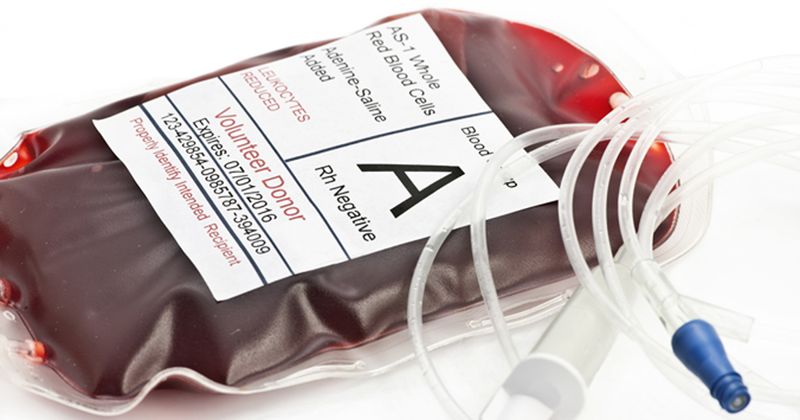Blood
Leverage blood donation system to uncover ‘underdiagnosed’ familial hypercholesterolemia
July 28, 2023
3 min read
Source/Disclosures
Published by:
Khera A. Session 8: Novel Approaches to Opportunistic Screening. Presented at: American Society for Preventive Cardiology Congress on CVD Prevention; July 21-23, 2023; Arlington, Texas.
Disclosures:
Khera reports no relevant financial disclosures.
Key takeaways:
- Familial hypercholesterolemia (FH) is a common disorder that causes premature coronary artery disease.
- Screening blood donors could help detect and notify people with potential FH, and guide cascade screening.
ARLINGTON, Texas — Familial hypercholesterolemia is common, underdiagnosed and undertreated, and one complementary approach to improve its diagnosis could include leveraging the blood donation system, according to a speaker.
It is estimated that about one in 250 people have familial hypercholesterolemia (FH), an autosomal-dominant disorder that is common across race and ethnic groups and is associated with increased morbidity, particularly risk for CAD, Amit Khera, MD, MSc, FACC, FAHA, FASPC, professor of medicine, director of preventive cardiology and the Dallas Heart Ball chair in hypertension and heart disease at University of Texas Southwestern Medical Center, said during a presentation at the American Society for Preventive Cardiology Congress on CVD Prevention. Early treatment can prevent adverse CV outcomes, but there remains a large gap in diagnosis, according to Khera.
Image: Adobe Stock
“Between 70% and 90% of people in the U.S. that have FH are not diagnosed,” Khera said. “That is a call to arms against something that is very treatable, that has a lot of morbidity. We must do better.”
Several strategies have been proposed to improve identification of FH, including the use of newborn lipid screenings and opportunistic screenings that occur during pediatric vaccinations.

Amit Khera
“If you are following the literature, you are seeing a lot of genetic screenings proposed,” Khera said. “Many institutions are looking at their electronic health records. There are lot of mouse traps out there. I will walk you through one example.”
Using cholesterol readings via blood donation
Khera noted that about 7 million people per year donate blood; blood donation centers will often check donors’ total cholesterol for free as part of the donation visit.
“These people, by definition, are healthier and generally younger, and health insurance is not required to donate blood,” Khera said. “This is not a medical encounter; it is completely different.”
In a study published in 2019 in JAMA Cardiology, Khera and colleagues analyzed data from 1,178,102 blood donors who provided 3,038,420 blood donations. The researchers defined FH using the Make Early Diagnosis to Prevent Early Death (MEDPED) general population criteria, with total non-fasting serum cholesterol thresholds of 270 mg/dL, 290 mg/dL, 340 mg/dL and 360 mg/dL for donors younger than 20 years, aged 20 to 29 years, aged 30 to 39 years and aged 40 years or older, respectively. The median age of blood donors for the study was 32 years.
Within the cohort, 3,473 people, or one in every 339 people, met criteria for FH.
Khera noted that the prevalence among the large cohort of blood donors was similar to the estimated prevalence of FH in the general population, yet the people identified to have FH in the study were significantly younger than people diagnosed with FH in the general population.
“This really brought the concept forward of, could we use blood donation as a portal to improve identification of FH?” Khera said
Implementation science for FH
To improve cholesterol treatment among blood donors with FH, Khera and colleagues are working with implementation scientists to recruit participants for DONATE-FH, a single-center, randomized trial. The two study arms include receiving usual care (standard notification of FH) or an implementation bundle intervention. University of Texas Southwestern Medical Center is the main study site; Carter BloodCare is serving as the recruitment site.
For usual care, Carter BloodCare will notify participants of their high cholesterol, potential for genetic causes, and recommendation to see their care provider by sending its routine, standard notification letter. These participants will also be eligible to receive the intervention bundle at the end of the study. The intervention bundle includes multimodal communications to notify donors about high cholesterol and its treatment, website with resources, and an optional care navigator. Resources for their primary care provider will also be disseminated, Khera said.
Khera said notifying blood donors can be tricky and requires a careful approach. This, he said, is where implementation science comes in.
“Someone came to donate blood, and it was not a medical encounter,” Khera said. “You are now going to tell them that they have a disease that they did not know they had, that they did not come to find, and you’re going to tell them that they need to be treated. How is that going to work?”
To develop the implementation bundle, the researchers held focus group interviews with 25 donors who had FH as well as with primary care staffers and physicians to enhance the treatment of blood donors and their acceptance of the condition, Khera said.
Khera said the researchers are working with the Family Heart Foundation to create a centralized program to be disseminated to the 67 blood donation centers across the U.S. at the end of the study.
“This is scalable, if and when we are successful,” Khera said. “We have several strategies, and I do not think one is better than the others. We need all of them to improve the detection and treatment of FH. Implementation science is needed to advance the care of people beyond FH diagnosis.”


